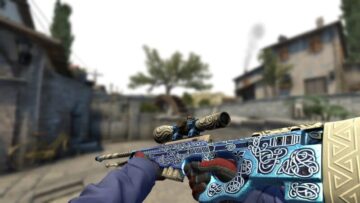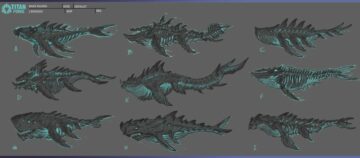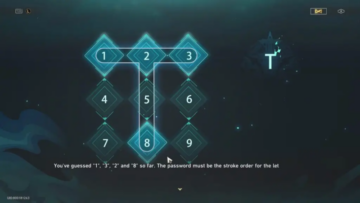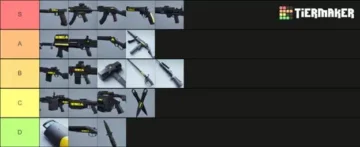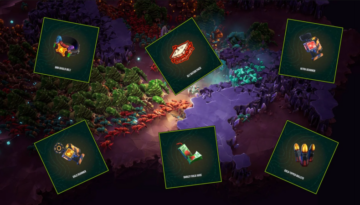When playing a game like Baldur’s Gate 3, it is vital to select the class that most closely matches your playing style. For example, you might find that you utilize some talents more frequently than others or that some races are more comparable to certain classes than others. Following our analysis of The Wizard class, we have decided to provide you with a broad overview of The Druid class in this article so that you are aware of its peculiarities in Baldur’s Gate 3.
The Druid class overview
Baldur’s Gate 3 has a total of twelve classes, including the Druid. Wisdom is the class’s major skill, while Wisdom and Intelligence are its saving throw skills. It is also necessary to note that their Hit Die is 1d8. Members of this class are skilled with simple weapons, light armor, medium armor, and shields, among other weaponry.
Animals and druids are closely related, and druids can channel the elemental energies of nature. They can change into monsters from all over the Realms thanks to their mastery of Wild Shape. With both defensive and healing Spells, the Druid class offers a lot of flexibility, giving it a fantastic support for the party.
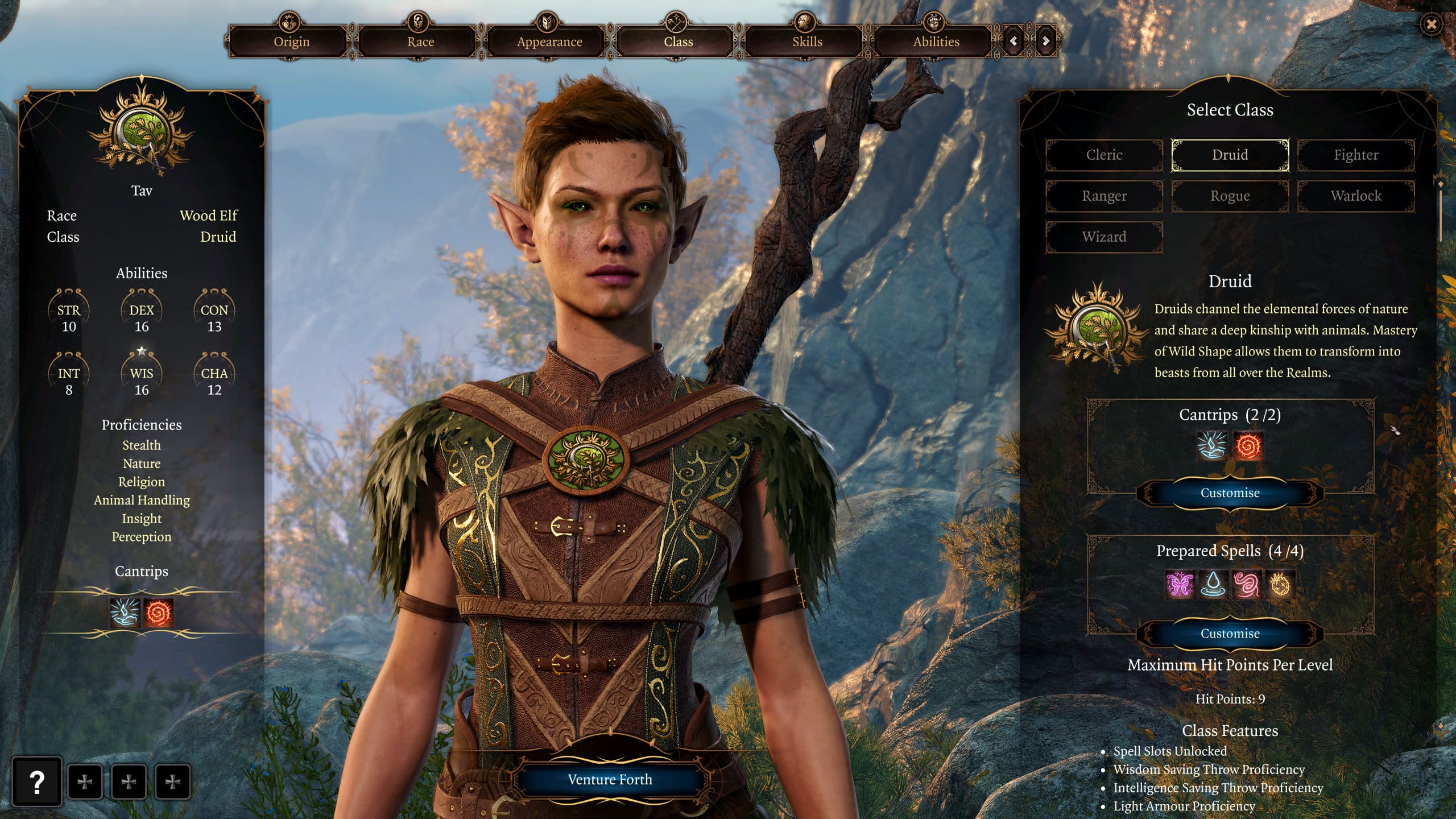

The Druid class features
In order to provide you with a more comprehensive grasp of The Druid class and all the features it offers, we have put together a list of every feature you will have access to if you choose to begin your Baldur’s Gate 3 adventure as a member of The Druid class.
- Spell Slots Unlocked: Casting spells use up your available spell slots. The two level 1 spell slots you receive are restored after a lengthy rest.
- Wisdom Saving Throw Proficiency: Increase Wisdom Saving Throws by the amount of your Proficiency Bonus.
- Proficiency in Intelligence Saving Throws: Increase the number of successful saves by the amount of your Proficiency Bonus.
- Proficiency in Light Armor: Wearing Light Armor will not put your attacks at a disadvantage or hinder you from casting spells.
- Proficiency with Medium Armor: Medium armor won’t make you less effective at attacking or prohibit you from casting spells.
- Shield Proficiency: Wearing a shield won’t hinder your attacks or prevent you from casting spells, therefore you have proficiency with it.
- Club Proficiency: It increases your chance of hitting a target when using clubs by adding your proficiency bonus to attack rolls.
- Dagger Proficiency: When rolling for attacks with daggers, add your proficiency bonus.
- Dart Proficiency: When using darts, add your proficiency bonus to attack rolls.
- Javelin Proficiency: When using javelins, add your proficiency bonus to attack rolls.
- Mace Proficiency: When using maces, add your proficiency bonus to attack rolls.
- Quarterstaff Proficiency: When using quarterstaffs, add your proficiency bonus to your attack rolls.
- Scimitar Proficiency: When using scimitars, add your proficiency bonus to attack rolls.
- Sickle Proficiency: Increase your attack rolls when using Sickles by adding your proficiency bonus.
- Sling Proficiency: When using slings, add your proficiency bonus to your attack rolls.
- Spear Proficiency: Include your proficiency bonus when making spear attack rolls.
- While taking on their wild forms, druids can communicate with animals.
The Druid subclasses
The three subclasses of The Druid are all accessible to players in Baldur’s Gate 3. Subclasses are modifications of the main class that allow players to retain the benefits of their parent class while acquiring skills and qualities specific to that subclass, even if they choose to follow alternative paths. The Druid can be a member of any of the following subclasses:
- Circle of the Moon
- Combat Wild Shape: You may transform into a beast as a Bonus Action. Every brief rest allows for two transformations.
- Circle of the Land
- Wild Shape: You have the ability to transform into a beast as an action. Per brief rest, you are permitted to transform twice.
Natural Recovery: You have the ability to restore depleted spell slots once every day when not in battle.
- Wild Shape: You have the ability to transform into a beast as an action. Per brief rest, you are permitted to transform twice.
- Circle of Spores
- Halo of Spores: You are surrounded by undetectable necrotic spores starting at level 2, which are safe until you let them loose on a nearby monster. You can use your reaction to deliver 1d4 necrotic damage to a visible creature that enters a space within 10 feet of you or begins its turn there. This only works if the visible monster fails a Constitution saving throw against your spell save DC. At levels 6, 10, and 14, the necrotic damage rises to one die (d6), one die (d8), and one die (d10).
- Symbiotic Entity: You are also given the power to channel magic into your spores at level 2. Instead of changing into a beast form as an action, you can spend a use of your Wild Shape feature to awaken those spores, and for each level you have in this class, you gain 4 temporary hit points. The following advantages are yours while this feature is in use: roll the damage die once again and add it to the total when you deal Halo of Spores damage and any creature you strike with a melee attack from you receives an additional 1d6 necrotic damage. All of these temporary hit points are lost if these advantages expire after 10 minutes, till you once again take your Wild Shape.
- Fungal Infestation
- Spreading Spores
- SEO Powered Content & PR Distribution. Get Amplified Today.
- PlatoData.Network Vertical Generative Ai. Empower Yourself. Access Here.
- PlatoAiStream. Web3 Intelligence. Knowledge Amplified. Access Here.
- PlatoESG. Automotive / EVs, Carbon, CleanTech, Energy, Environment, Solar, Waste Management. Access Here.
- BlockOffsets. Modernizing Environmental Offset Ownership. Access Here.
- Source: https://estnn.com/baldurs-gate-3-classes-the-druid-class-and-subclasses/
- 1
- 10
- 14
- a
- ability
- access
- accessible
- acquiring
- Action
- add
- adding
- Additional
- advantages
- Adventure
- after
- again
- Against
- All
- allow
- allows
- also
- alternative
- among
- amount
- an
- analysis
- and
- animals
- any
- ARE
- article
- as
- At
- available
- aware
- Baldur's Gate
- Battle
- BE
- begin
- benefits
- bonus
- both
- broad
- by
- CAN
- casting
- certain
- chance
- change
- changing
- channel
- choose
- class
- classes
- closely
- communicate
- comparable
- comprehensive
- damage
- day
- dc
- deal
- decided
- defensive
- deliver
- each
- Effective
- Enters
- entity
- even
- Every
- Example
- fails
- Feature
- Features
- Feet
- find
- Flexibility
- follow
- Following
- For
- form
- forms
- frequently
- from
- gain
- game
- given
- Giving
- grasp
- guide
- Halo
- has
- Have
- healing
- hinder
- HIT
- hitting
- HTTPS
- if
- in
- include
- Including
- Increase
- increases
- instead
- Intelligence
- into
- Is
- IT
- ITS
- Land
- less
- Level
- levels
- light
- like
- List
- lost
- lot
- Magic
- main
- major
- make
- Making
- mastery
- matches
- May
- medium
- Melee
- member
- Members
- might
- minutes
- monsters
- Moon
- more
- most
- nature
- necessary
- not
- number
- of
- Offers
- on
- once
- One
- only
- or
- order
- Other
- Others
- our
- over
- Party
- per
- plato
- plato data intelligence
- platodata
- platogaming
- players
- Playing
- Points
- power
- prevent
- Provide
- put
- reaction
- receive
- Receives
- recovery
- RELATED
- REST
- restore
- retain
- Roll
- Rolling
- rolls
- s
- safe
- save
- saves
- saving
- shape
- shield
- Simple
- skill
- skilled
- skills
- Slots
- So
- some
- Space
- Spear
- specific
- spend
- Starting
- strike
- style
- successful
- support
- Take
- taking
- talents
- Target
- temporary
- than
- thanks
- that
- The
- their
- Them
- there
- therefore
- These
- they
- this
- those
- three
- till
- to
- together
- total
- transform
- transformations
- turn
- Twice
- two
- until
- up
- use
- using
- utilize
- vital
- we
- weapons
- when
- while
- wild
- will
- with
- within
- works
- you
- your
- zephyrnet

